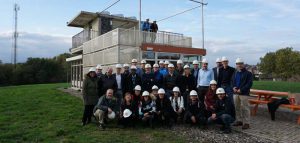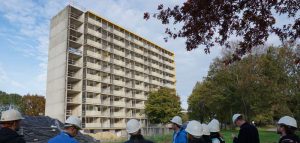How can Drive 0 help you?
People use energy
The key point in the Drive 0 Project is to understand that people themselves are those that use energy (to ensure a certain level of comfort), and not devices nor buildings, and this energy is involved in materials and components of buildings, according to decision making in their design.
Therefore, both technical solutions and business models supporting them must be focused on people, for example, by considering their expectations, daily habits and cultural practices, aimed at reducing the use of energy in different backgrounds and creating awareness in general. Such awareness of both, alongside the need and benefits of circular renovation, can be supported by people-based business models, and backed up by the use of ICT and solutions, as those developed in projects such as enCOMPASS, MOBISTYLE and TripleA-reno. This will not only achieve a sustainable home, but circularity will be implemented in homes.
About circular renovation in homes. What are we doing in Drive 0 Project?

The Drive 0 Project started in October 2019 and is due to end in September 2023. Before explaining what we do in Drive 0, we will define the notion of “Circular renovation”: “It is a deep circular reform which contributes to build up a circular environment”, and it is based on the use of 100% renewable energy throughout the life span, and all the materials used in the system are part of infinite technical and biological cycles, with a minimum loss of quality”.
On a transition to circular houses

In order to reach a deep and circular transition, the market for building renovation needs to be transformed. This can be achieved by providing technical solutions and through innovative construction processes, combining optimization and digitalization processes (using BIM, Building Information Modelling, as the main support), and innovative business models.
Lessons learnt

One of the most important achievements learnt in this “first generation” of H2020 (Horizon 2020) on comprehensive renovation projects is a transformation focused on people.
In addition, current solutions for comprehensive renovations only consider operational aspects and dismiss others such as the energy used and CO2 emissions. People-centered business models can be especially effective if combined with the identification and exploitation of local economic and/or technical motivations, as they can accelerate a profound circular and cost-efficient renovation. This will only be successful if people living in the buildings, owners, those who manage them and financial institutions adopt and implement these principles, as key agents to promote a transition to a deep and circular renovation.
The key to success is a clear overview of the complete life cycle in relation to energy, quality of indoor spaces, health and well-being, flow of materials, etc., in addition to a solid management of the quality in the renovation process. After the renovation process itself, people living in the houses must have access to data, presented in an understandable way, information on the real performance of the building, both in terms of energy and indoor environmental quality, and in particular health and well-being linked to renovation. All of this finally achieves a circular home.
